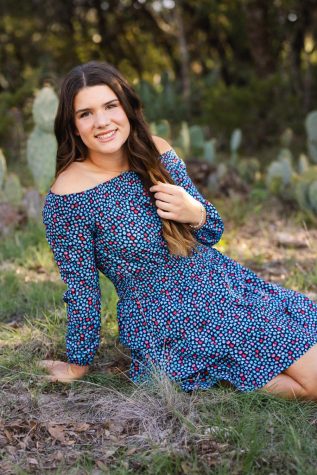Bird, Plane, or Butterfly?
Elementary students release butterflies

painted lady butterfly
May 10, 2021
Colorful wings burst out of their cages and take off into the open blue sky while kids race around the lawn trying to catch the butterflies with only their two hands. Wall Elementary classes released multiple painted lady butterflies Thursday, May 6 completing the final step of the butterfly life cycle project.
Following spring break, each classroom receives a cup of butterfly larvae, or caterpillars, and a butterfly habitat for each class. Fifth grade science teacher Cindy Coffman, who has led the project for the past eight years, received a grant that sponsored the project in the 2013-2014 school year. Because the project quickly became popular among Elementary teachers in need of a way to teach the life cycle, Wall Elementary has since chosen to sponsor the butterfly project.
“Usually by the end of February, there are already emails making sure I’m still going to do the project, so I think everybody really enjoys it,” Coffman said. “Every grade is somewhat responsible for teaching life cycles in science. What better way to teach it than actually seeing it happen?”
Young students certainly did experience the live-action life cycle up-close. According to kindergarten students, watching the butterflies emerge from their cocoons was highly entertaining.
“When they came out, there was yucky, red, drippy stuff from their cocoons,” Kindergarten student Lincoln Wilkins said. “We thought it was butterfly blood, but it’s different from human blood, so we didn’t know for sure.”
Other students found the end result of the butterfly life cycle more fascinating rather than just studying the project. The day the butterflies were released made for an enjoyable morning.
“We were so excited to have fun chasing them,” Kindergarten student Kasen Moore said. “It took three whole weeks before we could chase them though because they had to stay in the case one week, but it took a whole other week for them to turn into butterflies.”
Coffman reports there are also students who quickly become attached and protective over the butterflies that struggle to endure their life cycle.
“We have had a few butterflies that weren’t quite looking like they would make it, and some kids really do care about trying to get them to come out of the chrysalises,” Coffman said. “To me, seeing how nurturing kids are with the butterflies is really the best part.”
